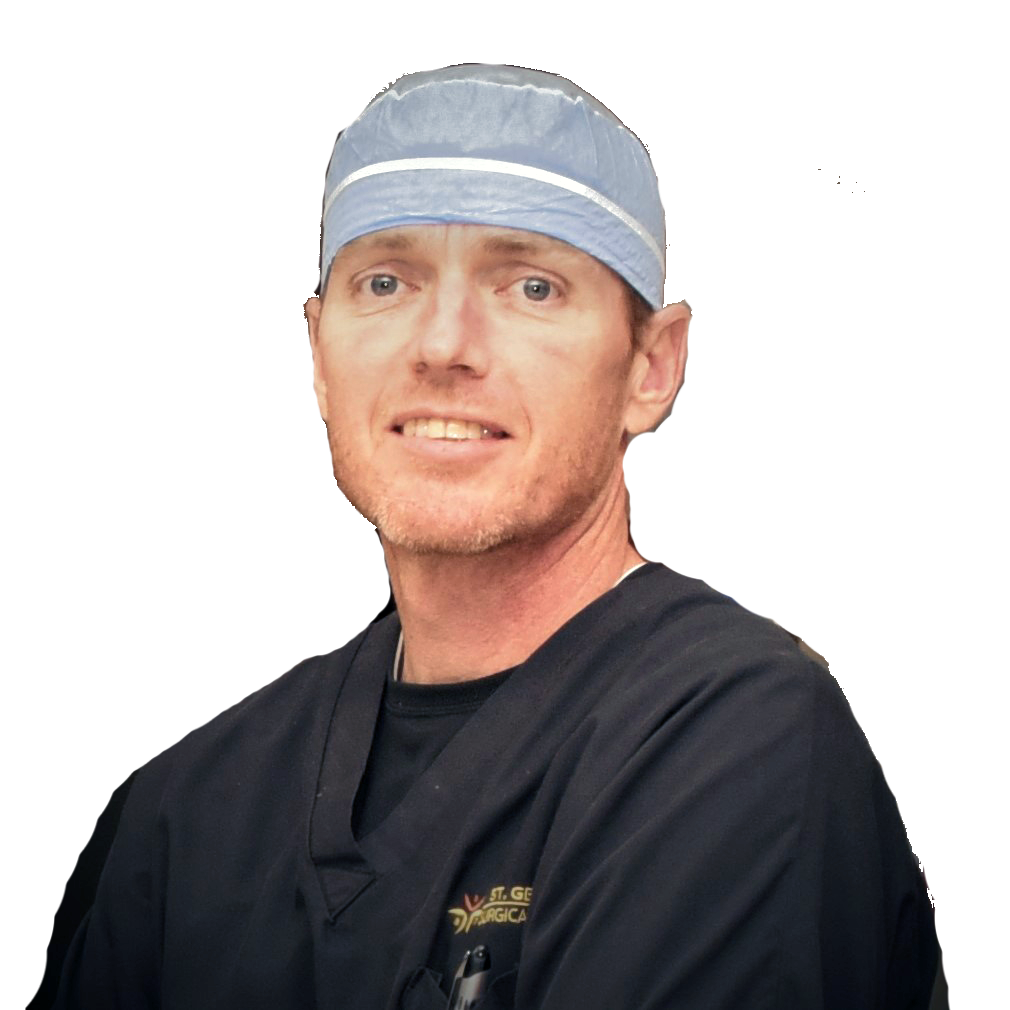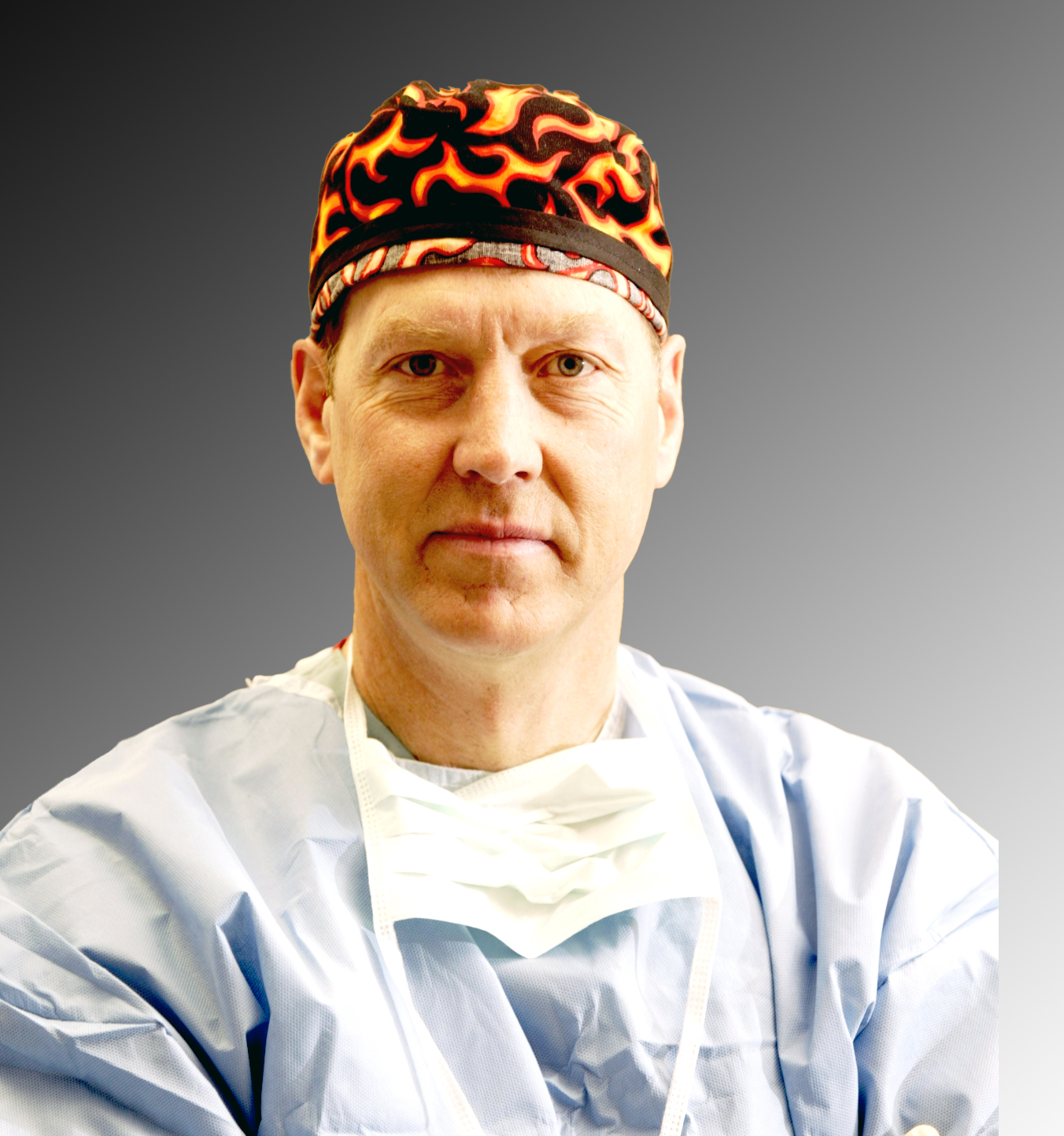Robot
Robotic Surgery
The robotic system works in conjunction with the surgeon’s hands to achieve the precise positioning of the knee implant. Using the Navio robotic-assisted hand piece enables your Navio-certified, board certified and fellowship trained surgeon to plan the surgery accurately intraoperatively, position the implants, and reduce the risk of errors during the procedure, while decreasing the length of time it takes for you to recover and return to your formerly active lifestyle enjoying friends, family, recreation, shopping, and other active leisure activities.

FAQS
Frequently asked questions about surgical procedures
Can I use my insurance and get these prices?
Payment is due 14 calendar days prior to your surgery date. If, after the cutoff, your account is not settled, your case must be postponed.
How quickly can I have surgery?
How will I meet my surgeon?
If I had a car or work accident, would you work with my employer or attorney for payment?
What if I get sick right before my surgery?
You could develop a respiratory infection, a urinary tract infection, COVID, or some other condition that may necessitate postponement. There is no penalty when this happens.
What’s Included:
- Facility fee
- Graft and hardware costs (if needed)
- Surgeon and assistant surgeon fees
- Anesthesiologist
- Time in the recovery unit (at no additional charge)
- Initial consultation visit
- One post-operative visit
*Please note: If you choose not to proceed with surgery after the initial consultation, or if you delay your procedure for more than 6 weeks, you will need to update your consultation at a cost of $375.
What’s not included:
- Lab testing before and after the surgery, as needed
- Electrocardiogram (EKG), depending on age. If you had one elsewhere in the past 6 months and it read “normal”, we can forego this expense.
- Imaging costs. X-rays and MRIs can be obtained anywhere.
- Physical therapy services
- Medications you’ll need (oral or IV antibiotic infusions if an infection arises)
- Wound care
- Bracing supplies
- Additional doctor visits (a pre-operative visit with the surgeon, in person, and any required post-op follow-ups after the suture removal to monitor your progress
- Additional surgical intervention if a complication arises
- Additional imaging or hospital care if a blood clot develops
Are you a candidate for knee replacement with NAVIO Robotic-assisted Surgical System?
Is Living With Knee Pain Really Living?
If you’re one of the millions of people suffering from osteoarthritis, discover how knee replacement using NAVIO◊ robotic assistance may help you return to the activities you love.
Find out today how St George Surgical Center can help you return to an active lifestyle.
St George Surgical Center, a physician-owned, accredited outpatient surgery center has invested in cutting-edge technology to improve overall patient health: the NAVIO◊ robotics-assisted surgery is an advancement in orthopedics, putting accuracy in your surgeon’s hands that could result in a longer-lasting knee.
Contact our care coordinator today at (435) 705-7039 or toll-free at (844) 673-0095, and we’ll answer your questions and refer you to our two board-certified, fellowship-trained, NAVIO–qualified orthopedic surgeons for an initial consultation and review of your medical records and imaging studies.
If you live outside St George, it will be our pleasure to coordinate all your travel and accommodation.
How Do I Know If I am a Candidate for Robotic-Assisted Knee Replacement Using the NAVIO System?
Although each patient must consult with a physician individually, typical knee replacement candidates share the following characteristics:
- Knee pain in the knee during activities
- Knee pain is limiting activities on more days than not
- Initial knee pain or stiffness caused by activities from a seated position
- No longer finding relief from non-surgical treatment options
Not everyone is a candidate for knee replacement using the NAVIO Surgical System. Knee replacement surgery is intended to relieve knee pain and improve hip function. However, implants may not produce the same feel or function as your original knee. There are potential risks with knee replacement surgery, such as loosening, fracture, dislocation, wear, and infection that may result in the need for additional surgery. Individual results will vary. Talk to your doctor to determine what treatment may be best for you.
What robotic-assisted full/partial knee replacement patients are saying
Cystoscopy Procedure
At this point, you’ll be given anesthesia. If you get general anesthesia, this will be all that you are conscious of until you wake up. If you’re getting a local or regional anesthetic, you may be given a sedative to relax you. Your urethra will be numbed with an anesthetic spray or gel. You’ll still feel some sensations, but the gel makes the procedure less painful. The doctor will lubricate the scope with gel and carefully insert it into the urethra. This may burn slightly, and it may feel like urinating. If the procedure is investigatory, your doctor will use a flexible scope. Biopsies or other surgical procedures require a slightly thicker, rigid scope. The bigger scope allows surgical instruments to pass through it. Your doctor looks through a lens as the scope enters your bladder. A sterile solution will flow through to flood your bladder. This makes it easier for your doctor to see what’s going on. The fluid might give you an uncomfortable feeling of needing to urinate. With local anesthetic, your cystoscopy may take less than five minutes. If you’re sedated or given general anesthesia, Cystoscopy is a test that allows your doctor to look at the inside of your bladder and urethra. It’s done using a thin, lighted tube called a cystoscope; the entire procedure may take 15 to 30 minutes.
FEATURED SURGEONS
CHOOSING THE RIGHT ORTHOPEDIC SURGEON
Total and partial knee replacement surgery with the NAVIO Robotic-assisted Surgical System is a technically demanding surgery. Surgeons face a steep learning curve for this procedure, so choosing a surgeon who is skilled and certified to use the NAVIO◊ Robotic-assisted Surgical System is an important consideration. In St George, Utah, there are currently only two NAVIO-qualified surgeons, and they only operate at St George Surgical Center in Southern Utah where the robot is available.


Dr. Greg Hicken has surgical privileges at St. George Surgical Center.
The NAVIO surgical system is not for everyone. Children, pregnant women, patients who have mental or neuromuscular disorders that do not allow control of the knee joint, and morbidly obese patients should not undergo a NAVIO procedure. Knee replacement surgery is intended to relieve knee pain and improve knee function. However, implants may not produce the same feel or function as your original knee. There are potential risks with knee replacement surgery, such as loosening, fracture, dislocation, wear, and infection that may result in the need for additional surgery. Longevity of implants depends on many factors, such as the types of activities and weight. This information is provided for informational and educational purposes only, and is not intended to be, nor should it be construed as, medical advice. Consult your physician for details to determine if a NAVIO Robotic-Assisted procedure is right for you. The NAVIO surgical system is intended to assist the surgeon in providing software-defined spatial boundaries for orientation and reference information to anatomical structures during an orthopedic procedure. The NAVIO surgical system is indicated for use in surgical knee procedures, in which the use of stereotactic surgery may be appropriate, and where reference to rigid anatomical bony structures can be determined. These procedures include unicondylar knee replacement (UKR), patellofemoral arthroplasty (PFA), and total knee arthroplasty (TKA). The NAVIO surgical system is indicated for use with cemented implants only.
Can I Travel to St George for Surgery?
Yes, and we’ll help you make all your arrangements.
- We have arrangements to try to obtain free flights through a non-profit volunteer pilot organization. We can do this with 10 days’ advance notice in most cases.
- We have discount codes for the Holiday Inn in town. This hotel is 1.5 miles from the surgery center and 2 miles from our clinic.
- We’ll arrange to send your after-surgery medications to your hometown pharmacy for pickup before you leave.
What if I would rather drive to St George?
No problem, we can help with those plans as well. When you have surgery with us, we’ll need to make sure you’re safe and comfortable after surgery. We’ll arrange cold compression therapy that requires an AC/DC adaptor/transformer and frequent stops to stretch and refill the ice reservoir on the road.
We’ll ask about the vehicle you’ll travel in to ensure you have a way to elevate and stretch out in the vehicle on the road while someone else does the driving.

How are follow-up and initial consultations handled?
In-person and telehealth consultations are possible with the surgeon to whom your case is assigned. The initial visit is included in the surgical package and is valued at $375.
We can also obtain the flights from the volunteer pilot nonprofit if you’d like to come for initial and follow-up visits in person. One follow-up visit is included in the surgical package at a value of $175. Any additional visits are charged at the time of service to your credit or debit card.
Transparent Pricing Guide
Find out the exact cost of your procedure in seconds, with no hidden fees, no surprises, and complete transparency every step of the way.
